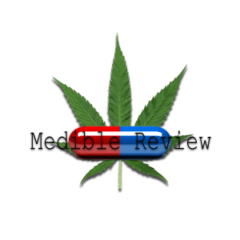California’s legal cannabis market is an infinitely complex map of regulations, priorities, business, and politics. As the layout of the industry continues to take shape, one area that has yet to receive much clarity is the law with regard to driving under the influence of marijuana.
The latest figure to weigh in is Sen. Jerry Hill of San Mateo. On Feb. 16, Hill introduced SB 1273, a law that would empower the state’s law enforcement to test any driver under 21 for cannabis in their system. If the test returns a detectable amount of THC, their license would be automatically suspended for one year.
Cannabis advocacy group Cal NORML was quick to condemn the proposed legislation.
“SB 1273 will do nothing to make the roads safer or reduce youth drug abuse,” said Cal NORML Director Dale Gieringer in a statement. “What it will do is encourage police to indiscriminately drug test young people for no good reason and take their licenses without any evidence of impairment or dangerous driving.”
Hill’s office did not return SF Weekly’s request for comment.
One key issue is that unlike alcohol, there are numerous instances in which it’s legal for individuals in California under the age of 21 to have medically administered THC in their systems. The 21-years-or-older cut-off was created as part of the implementation of Proposition 64, and mirrors the age restrictions that were in place for the medical-marijuana industry that preceded the adult-use market.
However, cannabis has been proven to significantly alleviate symptoms of ailments like cancer or Crohn’s disease. Patients using cannabis for treatment may be old enough to legally drive, but not yet 21. It seems SB 1273 is setting up this specific subset as targets in an ill-advised effort to prevent underage cannabis consumption when, in some cases, it may be perfectly legal.
Furthermore, tolerance levels have been proven to vary wildly between individuals. While one person may have what could be considered a “significant” percentage of THC in their system by general standards, that level may be the bare minimum required for any effect to take place.
It seems ludicrous that politicians would attempt to impose such imprecise rules on cannabis when no equivalent rule for prescription opioids — which again affect each person at a different rate — are not currently governed by similar legislation.
Beyond all that, there’s an even greater problem: how to test for THC levels in the first place. At present, the options for ascertaining one’s THC level include skin patch tests, saliva tests, and oral swabs — all of which are unproven and unreliable.
As NPR noted in a report published in July 2017, “Despite the increasingly legal use of cannabis in many states, cops still don’t have the equivalent of a reliable alcohol breathalyzer or blood test — a chemically based way of estimating what the drug is doing in the brain.”
The cannabis equivalent of a 0.08 blood alcohol concentration has also not yet been universally defined. Colorado law has the limit set at five nanograms of THC per milliliter of blood. In Nevada, it’s two nanograms.
California has yet to establish its own threshold, thus entrusting the process to individual discretion and tests. Unfortunately, these tests still fail to account for the fact that peak THC levels usually occur in the blood between 20 and 40 minutes after inhalation — meaning one may no longer be feeling the effects of marijuana at the time that it is most heavily concentrated in their bloodstream.
An entirely different set of metrics need to be employed when dealing with edibles, which only further goes to show that setting generalized “limits” to prove impairment is a very vague business.
Perhaps most damning of all is a recent study conducted in part by Columbia University and published in the journal Addiction last month, which found teen use of marijuana does not increase in states where the substance has been legalized for medical reasons.
“For now, there appears to be no basis for the argument that legalizing medical marijuana has increased teens’ use of the drug,” said senior study author Deborah Hasin of Columbia’s Mailman School of Public Health.
If the number of teens using cannabis isn’t on the rise, why is now the time for SB 1273? To enact a law that can’t be enforced with the tools and tests currently available is not only asinine; it’s reckless.
If Hill and any legislators who stand with him on this issue want to truly ensure that our roads remain safe, their resources would better be put towards preventative education and more research, so we can all more accurately know when it’s best not to get behind the wheel.




